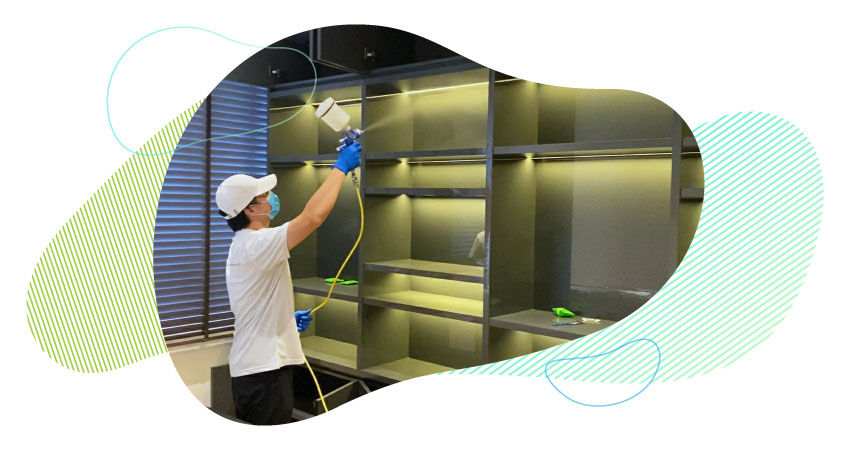Why Should You Prioritize Formaldehyde Removal in Singapore Residence?
- UC Fresh Air
- Sep 11
- 3 min read

Indoor air can look clean but still be full of invisible threats. One of the most common and overlooked pollutants in Singapore homes is formaldehyde. It's not just a problem for newly renovated spaces; even older properties can have lingering emissions.
By prioritising formaldehyde removal in Singapore, homeowners can protect their health, improve comfort, and prevent long-term issues. Here's what makes this topic crucial and what residents should know about dealing with it effectively.
Who Faces the Biggest Risks Indoors?
Formaldehyde exhibits a broad and indiscriminate impact, influencing a diverse array of organic substances and living organisms alike. Its effects are not limited to specific targets; instead, it interacts with various materials and life forms, causing changes and reactions across a broad spectrum without making distinctions.
It affects everyone, but certain groups are more vulnerable:
Children and elderly individuals with weaker immune systems
Asthma and allergy sufferers who are more sensitive to irritants
Office workers or remote employees spending long hours indoors
Families that have recently renovated or furnished their homes may be at higher risk. UC Fresh Air has observed that apartments with newly built-in cabinets and flooring often have elevated readings, making Formaldehyde Removal Solutions critical in those cases.
What Formaldehyde Really Does to Indoor Air
Formaldehyde is a colourless gas with a pungent, sharp odour that gradually emanates from various sources such as building materials, furniture, and adhesives. As it mixes with other Volatile Organic Compounds (VOCs), it plays a significant role in diminishing indoor air quality, leading to potential health concerns for those who inhabit these spaces.
The presence of formaldehyde and its volatile counterparts can create a challenging environment for maintaining clean and healthy air indoors. Long-term exposure may cause:
Eye, nose, and throat irritation
Headaches and fatigue
Respiratory issues and aggravated asthma symptoms
This is why Singapore professionals use precise air testing before treatment. It enables them to develop a targeted plan, rather than guessing where the problem originates.
When to Address the Problem
Some homeowners assume formaldehyde levels drop naturally after a few weeks of airing out the house. While partial off-gassing does happen, it can continue for months or even years. The best times to act include:
Right after renovation or furniture installation
Before moving into a new apartment
When household members experience unexplained irritation
Acting quickly can prevent health effects from becoming chronic. This is why UC Fresh Air recommends scheduling an air quality check early, followed by Formaldehyde Removal Solutions if levels exceed safe limits.
Where These Pollutants Hide
Formaldehyde is a chemical compound commonly found not just in freshly manufactured cabinets or wall panels, but also in a variety of household items and materials. This synthetic substance can be present in things like furniture, flooring, and even certain types of insulation, often releasing volatile organic compounds (VOCs) into the air.
Its presence can be more widespread than one might expect, impacting indoor air quality and potentially affecting health over time. It hides in:
Bedding and curtains treated with wrinkle-resistant chemicals
Glue in particleboard or MDF furniture
Certain types of insulation
Coatings, lacquers, and adhesives
These hidden sources make formaldehyde removal in Singapore challenging for DIY attempts. Professionals use specialised sprays and coatings that neutralise emissions at the source rather than just masking odours.
Why Investing in Removal Matters
Some homeowners may be hesitant to invest in additional ventilation methods, believing that simply opening windows suffices. However, in Singapore's humid climate, this strategy can be counterproductive, as it may allow outdoor pollutants and potentially lead to mould problems to enter the home. Proper Formaldehyde Removal Solutions:
Improve indoor air quality more reliably
Provide measurable results through before-and-after testing
Help protect children's long-term respiratory health
A cleaner home also supports better sleep and concentration. That's why property managers, offices, and clinics are increasingly prioritising indoor air treatment.
How Professionals Get It Done
Certified providers like UC Fresh Air follow a step-by-step approach:
Site Assessment: Surveyors measure baseline air quality.
Targeted Treatment: They apply eco-friendly sprays to furniture, walls, and flooring.
Ventilation & Purification: The space is aired out strategically.
Post-Treatment Testing: Results are documented so residents can see the improvement.
This process ensures lasting results rather than a temporary fix. Professional formaldehyde removal services in Singapore often utilise Japanese lab-tested products that address ongoing off-gassing, a task that over-the-counter air fresheners cannot accomplish.
The Bottom Line
Formaldehyde may be invisible, but its impact is significant. Residents in Singapore who prioritise formaldehyde removal are investing in their health and comfort. It's important not to wait for symptoms to appear, as emissions can linger for years if untreated.
With more people working from home, clean air has become crucial. Choosing formaldehyde removal solutions today fosters a safer living environment for tomorrow. Schedule an air quality test, identify sources of emissions, and collaborate with certified specialists like UC Fresh Air for better breathing and living.
.png)




.png)


Comments